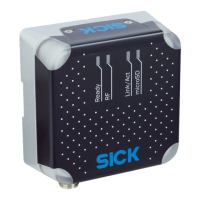Table 4: Overview of product features and functions of the device
Product feature/func‐
tion
Characteristic
Security and ease of
use
•
Rugged, compact metal housing, CE marking (Europe)
•
Automatic self-test at system start
•
Diagnostic tools for device setup and (remote) device monitoring
•
Configurable output of the read results including read diagnostics
data in two output formats
•
Operating data request. In the event of an error: output of codified
error messages on request
•
Test string function (heartbeat) can be activated to signal that the
device is ready for operation
•
Future-proof due to firmware update via data interface
•
Future-proof SOPAS ET configuration software with password-pro‐
tected configuration mode
•
SICK AppSpace ready: The device already includes SensorApp for
integrating it into existing communication networks
•
Low power consumption
•
Wide supply voltage range. Supply via separate power source or
PoE.
•
Large ambient temperature range. For details, see "Technical data",
page 61
•
Parameter cloning (to back up the configuration data in the internal
device memory):
°
By pluggable microSD memory card
1)
externally in the device
Convenient operation/
configuration
•
Configuration (online or offline) using SOPAS ET configuration soft‐
ware
•
Single Tag ID Wizard (assistant) to help with initial configuration
•
Configuration and starting of device functions via a web server
(SOPASair) or command strings
•
Optional function blocks for easier integration into PLC programs
•
PROFINET single port : Configuration via GSD parameterization
•
Application-specific programming is possible using the SICK AppStu‐
dio development environment.
You can find further information on the Internet at: www.sick.com/
SICK_AppStudio
•
Status and process feedback indicators via LEDs
Reading Operation
Mode
•
Start/stop operation: For reading one or more transponders during
a read cycle.
Read cycle
•
Start and stop conditions of the read cycle can be configured in the
object trigger control: digital input
Radio interface(s)
•
Integrated antenna
Transponder Process‐
ing
•
Base model RFU610 supports all standard passive transponders
that are compatible with EPCglobal UHF Class 1 Generation 2 or
ISO/IEC-18000-6C
•
Reading, writing, and multiple overwriting of the data on the
transponders, depending on the application
•
Within a process chain, the device supplying the data is a partial
component for the complete visualization of data
Transponder Manage‐
ment
•
Decoding of the UII in HEX, BIN and ASCII. Supports GS1 TDS and
other industry-specific standards such as VDA55xx.
Data processing
•
Variable read data output based on event-dependent evaluation
conditions
•
Influencing the output string by filtering and output sorting
•
Implementation of application-specific data output protocols using
the SICK AppStudio development environment (flexible back-end
integration)
3 PRODUCT DESCRIPTION
18
O P E R A T I N G I N S T R U C T I O N S | RFU61x 8024536//2019-08-30 | SICK
Subject to change without notice

